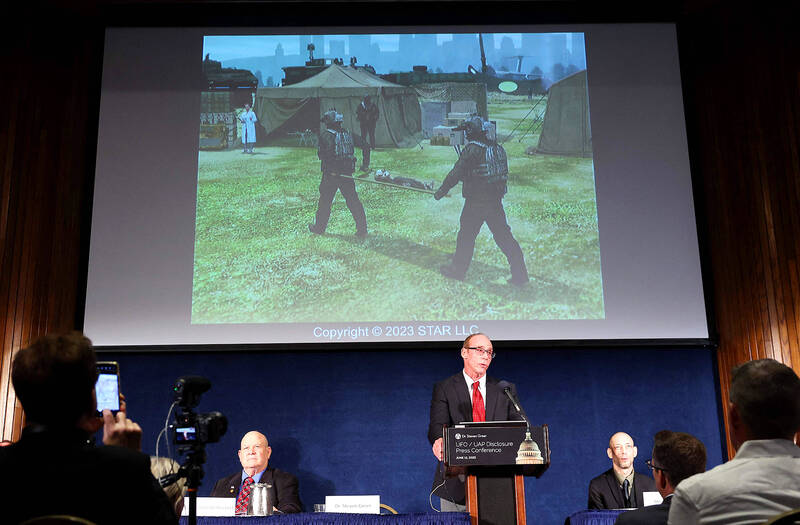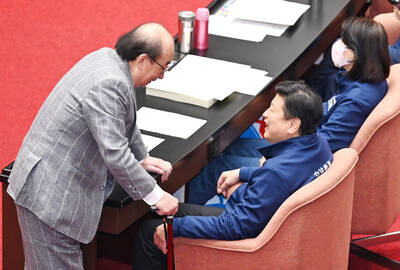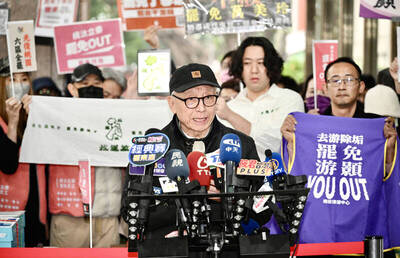Abraham Loeb, known as Avi, is a professor of astrophysics at Harvard University and he has done the unthinkable. He has repeatedly been willing to contemplate the existence of nonhuman technology and how it may explain certain perplexing astronomical observations that mainstream science struggles with.
Loeb, 61, is the author of Interstellar: The Search for Extraterrestrial Life and Our Future Beyond Earth, a follow-up to his New York Times bestseller Extraterrestrial: The First Sign of Intelligent Life Beyond Earth. On the day we spoke, the US government was preparing to hold a House of Representatives oversight and accountability committee hearing on UFOs with retired air force officer and former intelligence official David Grusch, who turned whistleblower in June, claiming that the US government had retrieved pieces of crashed alien spacecraft.
The Observer: When it comes to UFOs, why is it always a government cover-up? Why don’t astronomers see UFOs — aren’t they the people looking at the sky the most?

Photo courtesy of Wikimedia Commons
Avi Loeb: The government would be a natural first to recognize anything unusual in the sky or in crash sites because their day job is to worry about national security and to monitor the nearby environment. Astronomers always train their telescopes on very distant, slow-moving objects. They are not looking for anything fast-moving or nearby. So it’s possible that if anything unusual happened, the US government would notice it first.
TO: But your project Galileo (to look for evidence of extraterrestrial technological artefacts) aims to change that…
AL: We’ve built the first Galileo Project observatory at Harvard University and we monitor the sky all the time in the infrared, optical, radio and audio. We use machine-learning software to figure out whether everything we see is either natural — birds or bugs, or human-made like balloons, drones or aeroplanes — or maybe something else. The oceans and the sky are not classified. We can explore them scientifically. We don’t need to wait for the government to declassify information.

Photo: AP
TO: What started your interest in UFOs, or unidentified anomalous phenomena (UAPs) as they are now called?
AL: I was triggered by the discovery of the interstellar object Oumuamua back in October 2017. It passed close to Earth and was flagged as a near-Earth object. But it was actually moving faster than the escape speed of the solar system, so it had come from outside the solar system. Then it was found to be unusual in terms of its shape — most likely flat, based on the variation of light as it was tumbling. And then it was seen being pushed away from the sun without showing any evidence for evaporation, so it was not a comet. I suggested it was pushed by the reflection of sunlight [off its surface] and that brought in the possibility that it [its surface] was a membrane produced by technological means. A few years later, there was another object discovered that shared the same quality of being pushed away from the sun but with no cometary evaporation. It ended up being a rocket booster that Nasa launched in 1966. So here was a technological object that we produced; the question is: who produced Oumuamua?
TO: What made you organize a maritime expedition to trawl the Pacific Ocean near Papua New Guinea last month for possible extraterrestrial technological artefacts?

Photo: AFP
AL: In January 2019, I was interviewed for a radio program about a meteor that exploded above the Bering Sea. In reading about meteors, I found this catalogue that Nasa compiled of 273 meteors with velocity information. I told my student Amir Siraj: “Why don’t we go over this catalogue and check the fastest moving meteors — perhaps one of them is like Oumuamua and came from outside the solar system.”
Sure enough, we found this meteor from Jan. 8, 2014 that moved at 60kms/second. Three years later, the US government confirmed that it was interstellar (with 99.9 percent certainty) and provided information about the fireball. That convinced me to lead the expedition because the government data indicated that it exploded in the lower atmosphere. Therefore, it must have been tougher than all the other meteors in the catalogue. To me, that raised the possibility that maybe it was made of some artificial alloy, maybe stainless steel, and also was moving fast because it benefited from propulsion. So that led us to the Pacific Ocean, where it fell.
TO: What did you find?
AL: We localized the meteor explosion site using seismometer data, and then went there with a sledge that has magnets on both sides and collected 500 spherules — these are molten droplets from the surface of the object. Now we are engaged in analyzing their composition so that we can answer the question of whether the material is from outside the solar system and whether it’s of technological origin. If that material was stainless steel, we can figure it out. If it was semiconductor material, or computer screens, we can tell because the abundance of elements will be different. I have assigned the materials to three laboratories to figure out the composition. We will see what we find.
TO: You have received some pointed criticism for speaking on these topics. What do you think motivates that backlash?
AL: Academic jealousy. They see the attention that my research is getting and they try to step on this flower that rises above the grass level. My point is that science can be exciting if it resonates with the public’s interest. The fact that the government cares about and talks about objects that cannot be identified should make this a subject of inquiry within the mainstream of science. It’s our civic duty as scientists to bring clarity, using scientific instrumentation and methodology. Instead of ridiculing it or being jealous of the attention I am getting, scientists should join me in pursuing it. If we insist that anything we see must fit with past knowledge, we will never ever learn something new. So that’s one aspect of my book Interstellar.
TO: What other aspects do you cover in the book?
AL: I argue that finding extraordinary evidence requires extraordinary funding. Instead of focusing on disputes and military conflicts, if we invest US$2 trillion a year in space exploration, we could send a probe to every star in the Milky Way galaxy within this century. It’s just a matter of priorities. It could elevate us to a higher level of intelligence so that we will be worthy of attention from other civilizations. I jog every morning at sunrise and I did that on the ship. There was a film crew with me and the director asked me: “Are you running away from something or towards something?” I said: “Both.” I’m running away from some of my colleagues who have strong opinions without seeking evidence. And I’m running towards a higher intelligence in interstellar space.

Feb. 17 to Feb. 23 “Japanese city is bombed,” screamed the banner in bold capital letters spanning the front page of the US daily New Castle News on Feb. 24, 1938. This was big news across the globe, as Japan had not been bombarded since Western forces attacked Shimonoseki in 1864. “Numerous Japanese citizens were killed and injured today when eight Chinese planes bombed Taihoku, capital of Formosa, and other nearby cities in the first Chinese air raid anywhere in the Japanese empire,” the subhead clarified. The target was the Matsuyama Airfield (today’s Songshan Airport in Taipei), which

On Jan. 17, Beijing announced that it would allow residents of Shanghai and Fujian Province to visit Taiwan. The two sides are still working out the details. President William Lai (賴清德) has been promoting cross-strait tourism, perhaps to soften the People’s Republic of China’s (PRC) attitudes, perhaps as a sop to international and local opinion leaders. Likely the latter, since many observers understand that the twin drivers of cross-strait tourism — the belief that Chinese tourists will bring money into Taiwan, and the belief that tourism will create better relations — are both false. CHINESE TOURISM PIPE DREAM Back in July

Could Taiwan’s democracy be at risk? There is a lot of apocalyptic commentary right now suggesting that this is the case, but it is always a conspiracy by the other guys — our side is firmly on the side of protecting democracy and always has been, unlike them! The situation is nowhere near that bleak — yet. The concern is that the power struggle between the opposition Chinese Nationalist Party (KMT) and their now effectively pan-blue allies the Taiwan People’s Party (TPP) and the ruling Democratic Progressive Party (DPP) intensifies to the point where democratic functions start to break down. Both

This was not supposed to be an election year. The local media is billing it as the “2025 great recall era” (2025大罷免時代) or the “2025 great recall wave” (2025大罷免潮), with many now just shortening it to “great recall.” As of this writing the number of campaigns that have submitted the requisite one percent of eligible voters signatures in legislative districts is 51 — 35 targeting Chinese Nationalist Party (KMT) caucus lawmakers and 16 targeting Democratic Progressive Party (DPP) lawmakers. The pan-green side has more as they started earlier. Many recall campaigns are billing themselves as “Winter Bluebirds” after the “Bluebird Action”